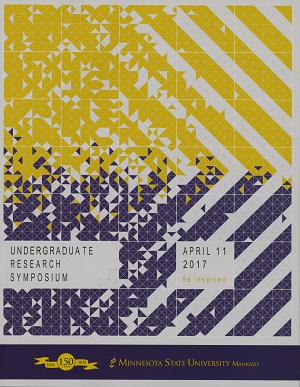Seasonal Variations in the Dorsolateral and Medial Cortex, the Reptilian Hippocampus Homologue
Location
CSU Ballroom
Start Date
11-4-2017 10:00 AM
End Date
11-4-2017 11:30 AM
Student's Major
Biological Sciences
Student's College
Science, Engineering and Technology
Mentor's Name
Rachel Cohen
Mentor's Department
Biological Sciences
Mentor's College
Science, Engineering and Technology
Description
The hippocampus is a region of the brain involved in spatial learning and memory and is a site of neural plasticity in the adult brain. In the seasonally breeding green anole lizard, Anolis carolinensis, steroid hormones, specifically testosterone (T) and its metabolites, estradiol (E2) and dihydrotestosterone (DHT), have been shown to play a role in seasonal changes to brain morphology. To investigate potential seasonal effects in the lizard homologue of the hippocampus, the dorsolateral cortex (DC) and medial cortex (MC), we examined 1) morphology in breeding (BS) and non-breeding (NBS) males and 2) neuron addition in BS males treated with various hormones. In experiment 1, we obtained males during the BS and NBS, collected brains, and examined volume in Nissl stained sections. In experiment 2, we gonadectomized BS males and implanted subcutaneous capsules containing T, E2, DHT, or left empty (blank). After hormone implantation, animals were injected with bromodeoxyuridine (BrdU; 50mg/kg) once per day for three days and brains collected after 25 days. Immunohistochemistry for BrdU and HuC/D (a neuronal marker) was performed to determine the number of new neurons (neurogenesis) present in the DC after treatment. Preliminary results for experiment 1 have shown there was no effect of season on the volume of either region, or the total volume (n=4; t0.502). Additionally, experiment 2 preliminary results suggest that DC, MC and total volume did not differ between T or Bl treated breeding males (n=2; t 0.258). More animals are currently being analyzed.
Seasonal Variations in the Dorsolateral and Medial Cortex, the Reptilian Hippocampus Homologue
CSU Ballroom
The hippocampus is a region of the brain involved in spatial learning and memory and is a site of neural plasticity in the adult brain. In the seasonally breeding green anole lizard, Anolis carolinensis, steroid hormones, specifically testosterone (T) and its metabolites, estradiol (E2) and dihydrotestosterone (DHT), have been shown to play a role in seasonal changes to brain morphology. To investigate potential seasonal effects in the lizard homologue of the hippocampus, the dorsolateral cortex (DC) and medial cortex (MC), we examined 1) morphology in breeding (BS) and non-breeding (NBS) males and 2) neuron addition in BS males treated with various hormones. In experiment 1, we obtained males during the BS and NBS, collected brains, and examined volume in Nissl stained sections. In experiment 2, we gonadectomized BS males and implanted subcutaneous capsules containing T, E2, DHT, or left empty (blank). After hormone implantation, animals were injected with bromodeoxyuridine (BrdU; 50mg/kg) once per day for three days and brains collected after 25 days. Immunohistochemistry for BrdU and HuC/D (a neuronal marker) was performed to determine the number of new neurons (neurogenesis) present in the DC after treatment. Preliminary results for experiment 1 have shown there was no effect of season on the volume of either region, or the total volume (n=4; t0.502). Additionally, experiment 2 preliminary results suggest that DC, MC and total volume did not differ between T or Bl treated breeding males (n=2; t 0.258). More animals are currently being analyzed.
Recommended Citation
Abdilahi, Abdiasis. "Seasonal Variations in the Dorsolateral and Medial Cortex, the Reptilian Hippocampus Homologue." Undergraduate Research Symposium, Mankato, MN, April 11, 2017.
https://cornerstone.lib.mnsu.edu/urs/2017/poster-session-A/1



